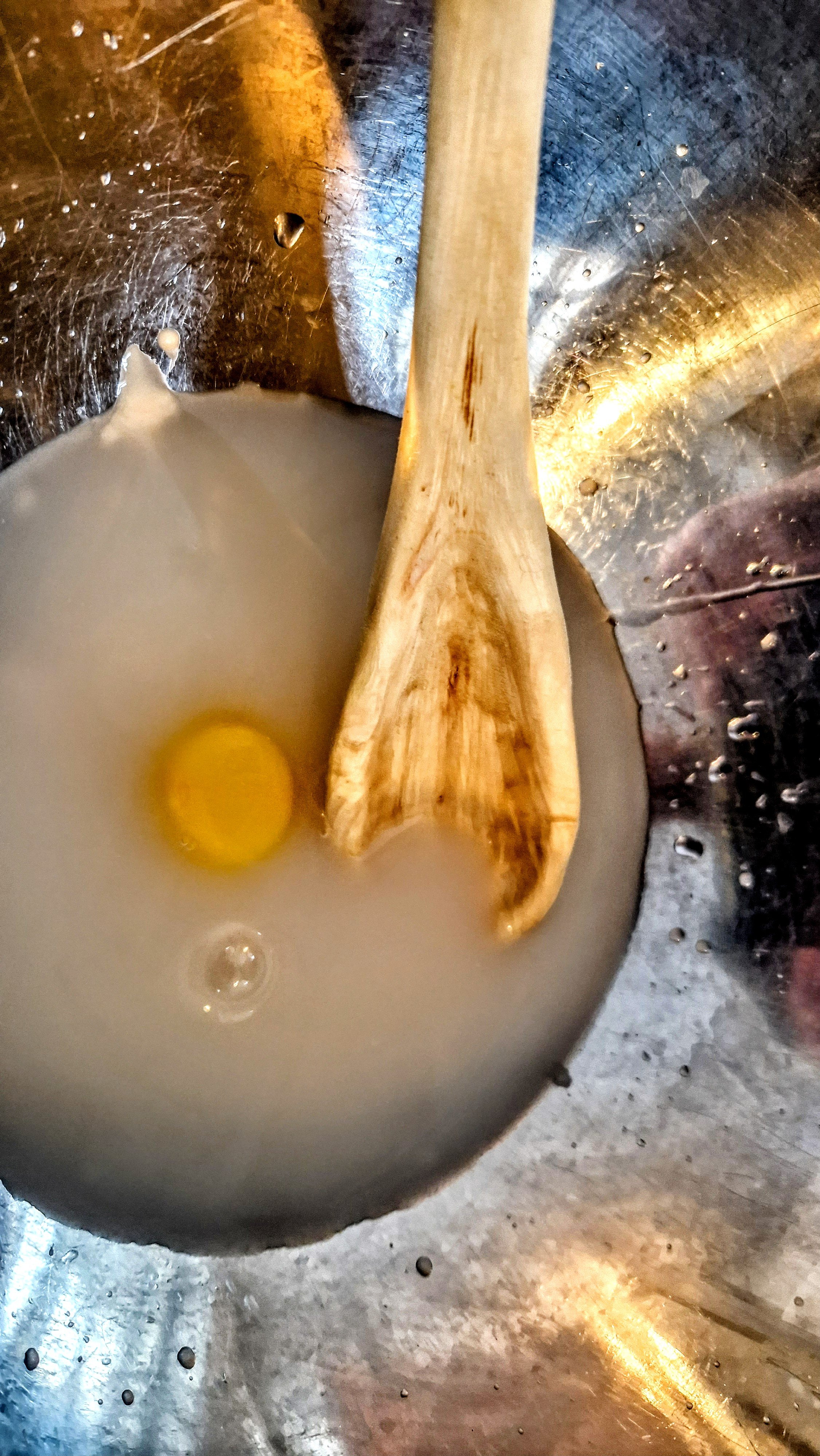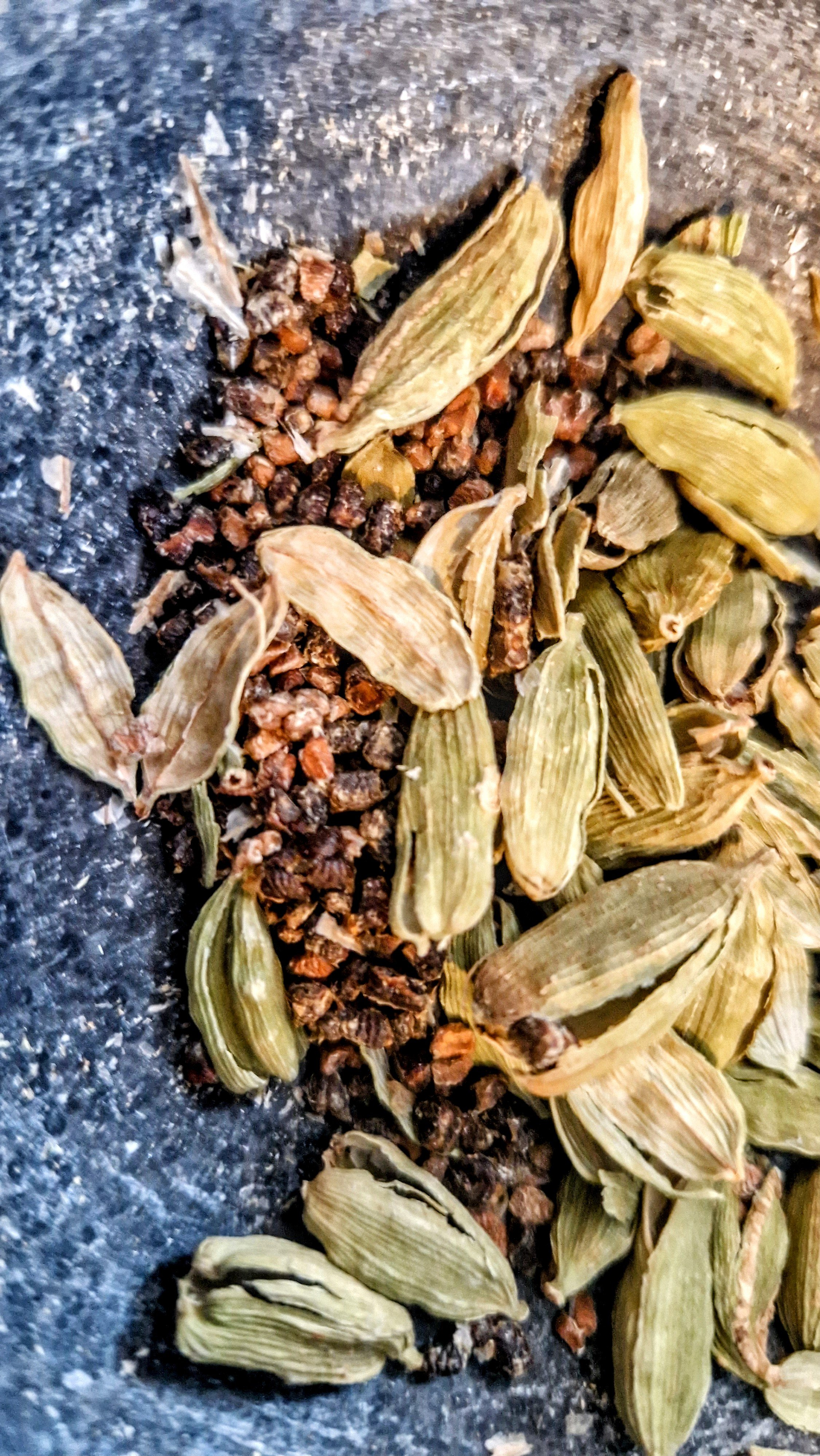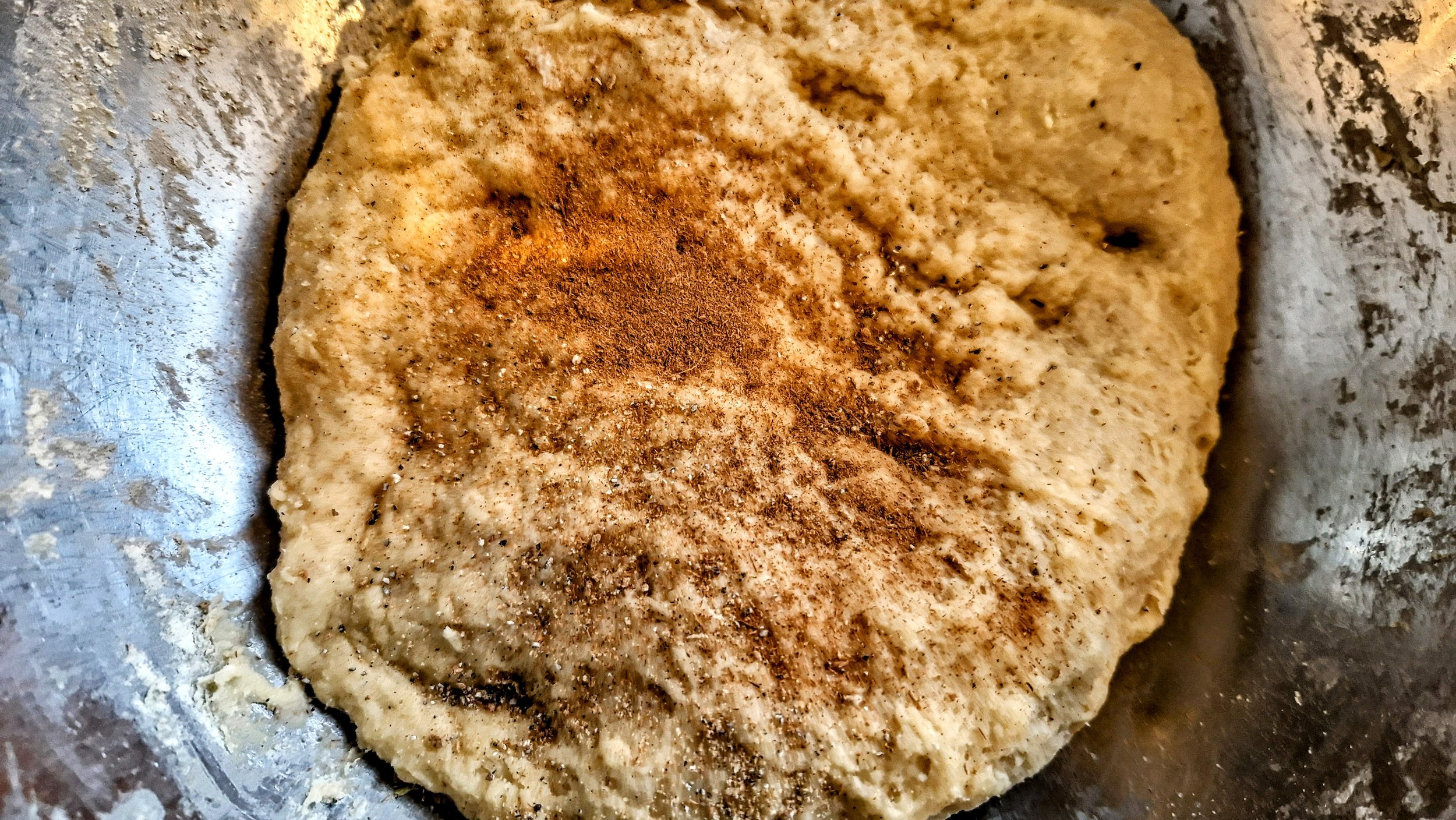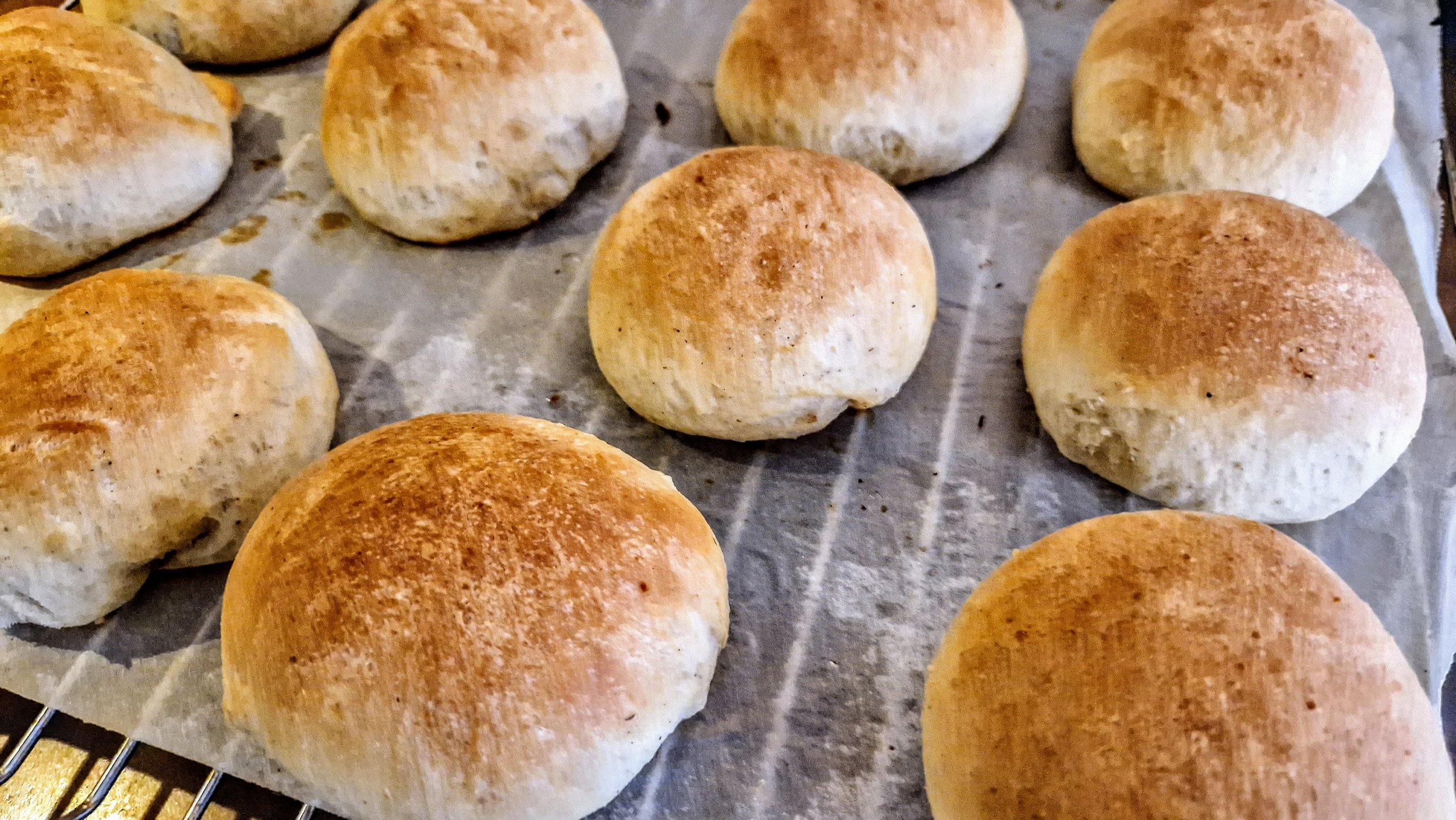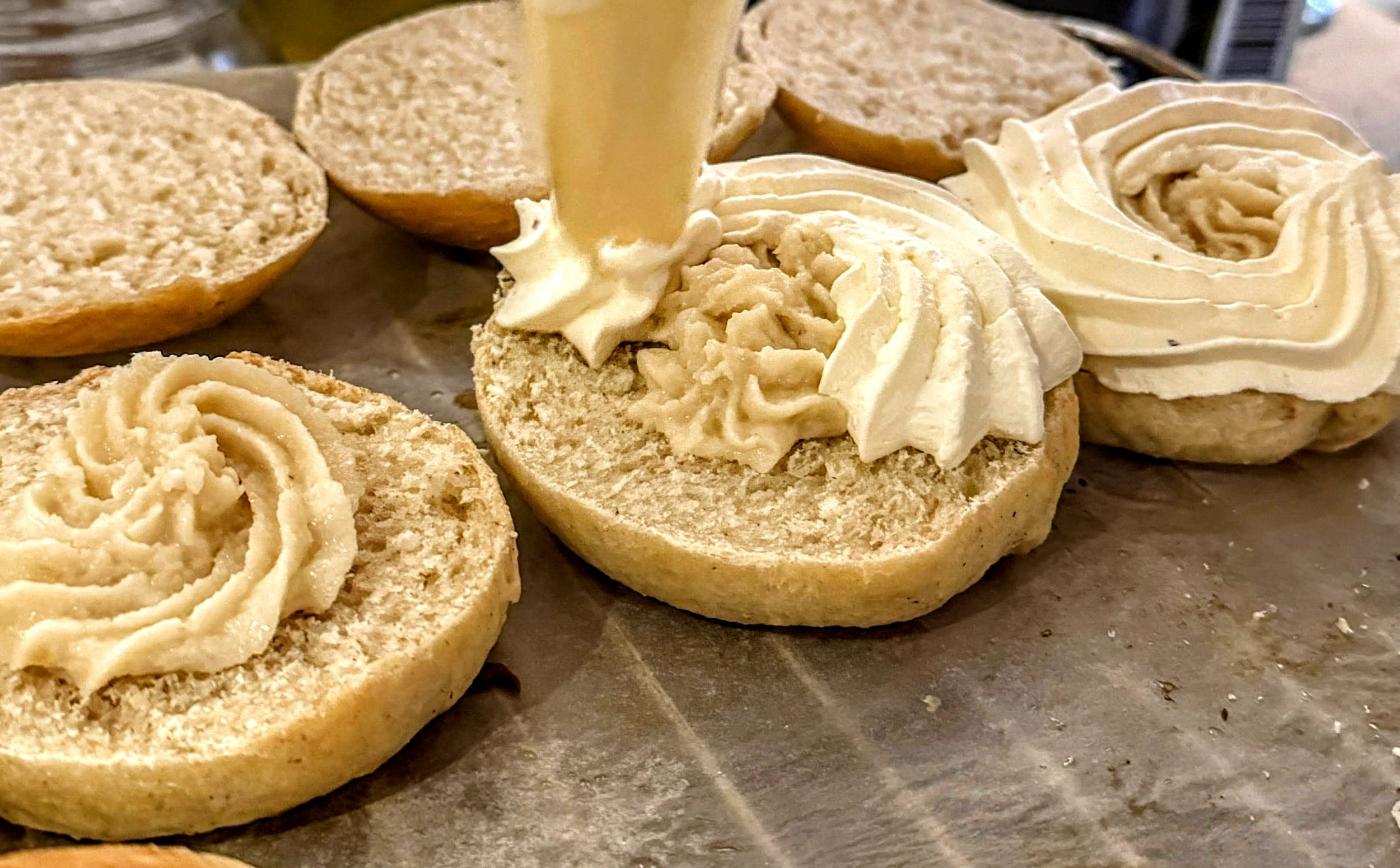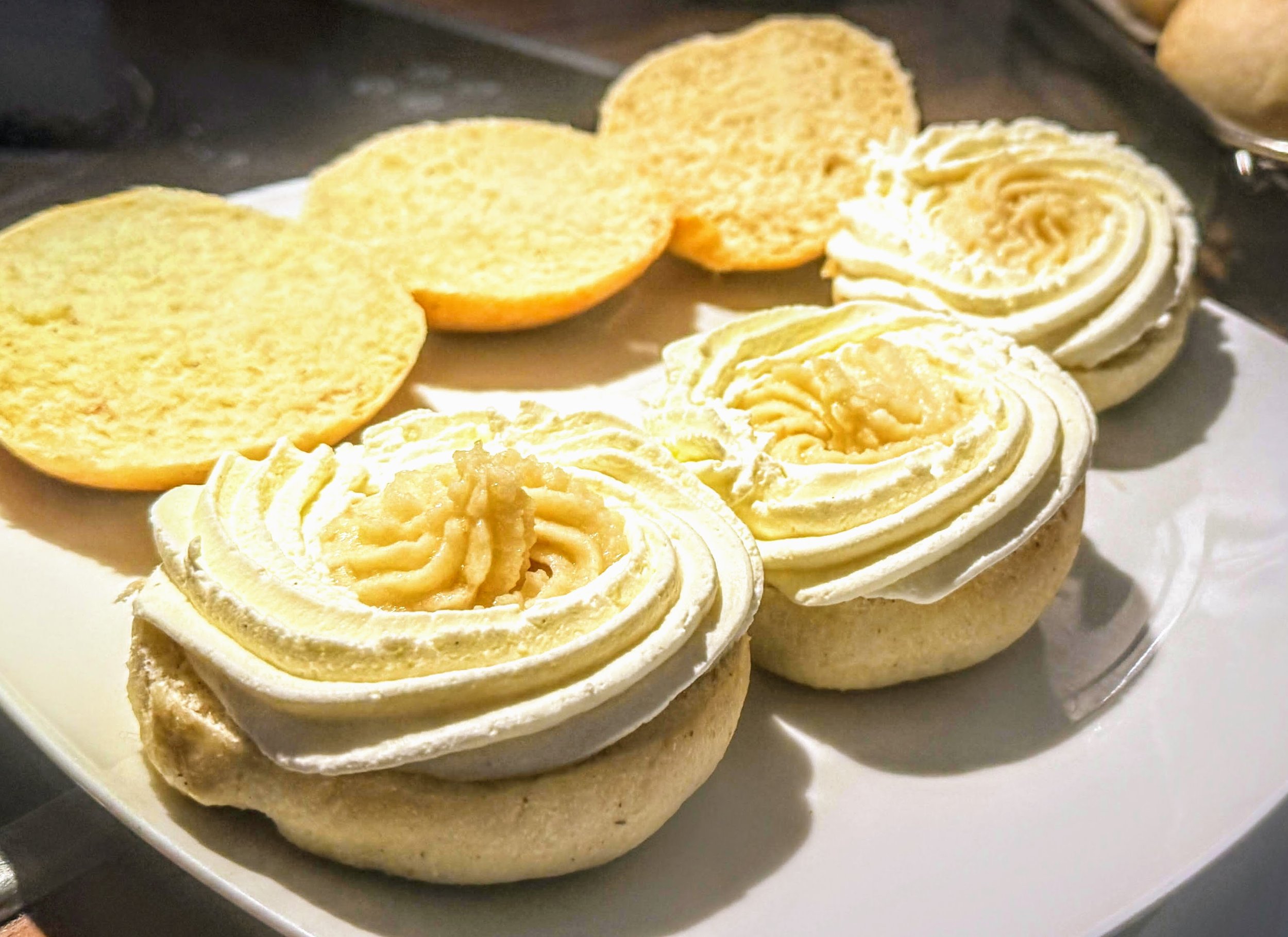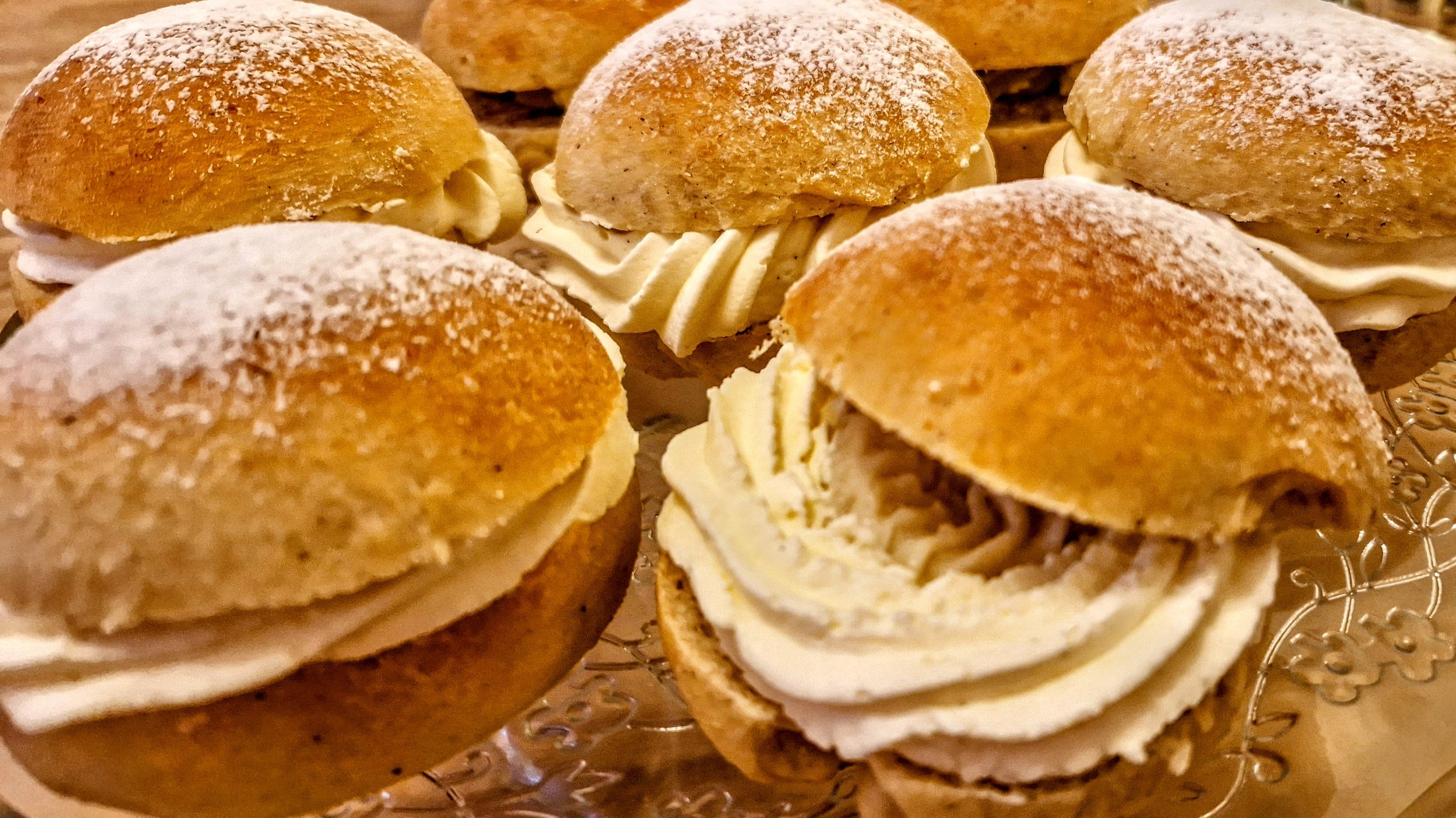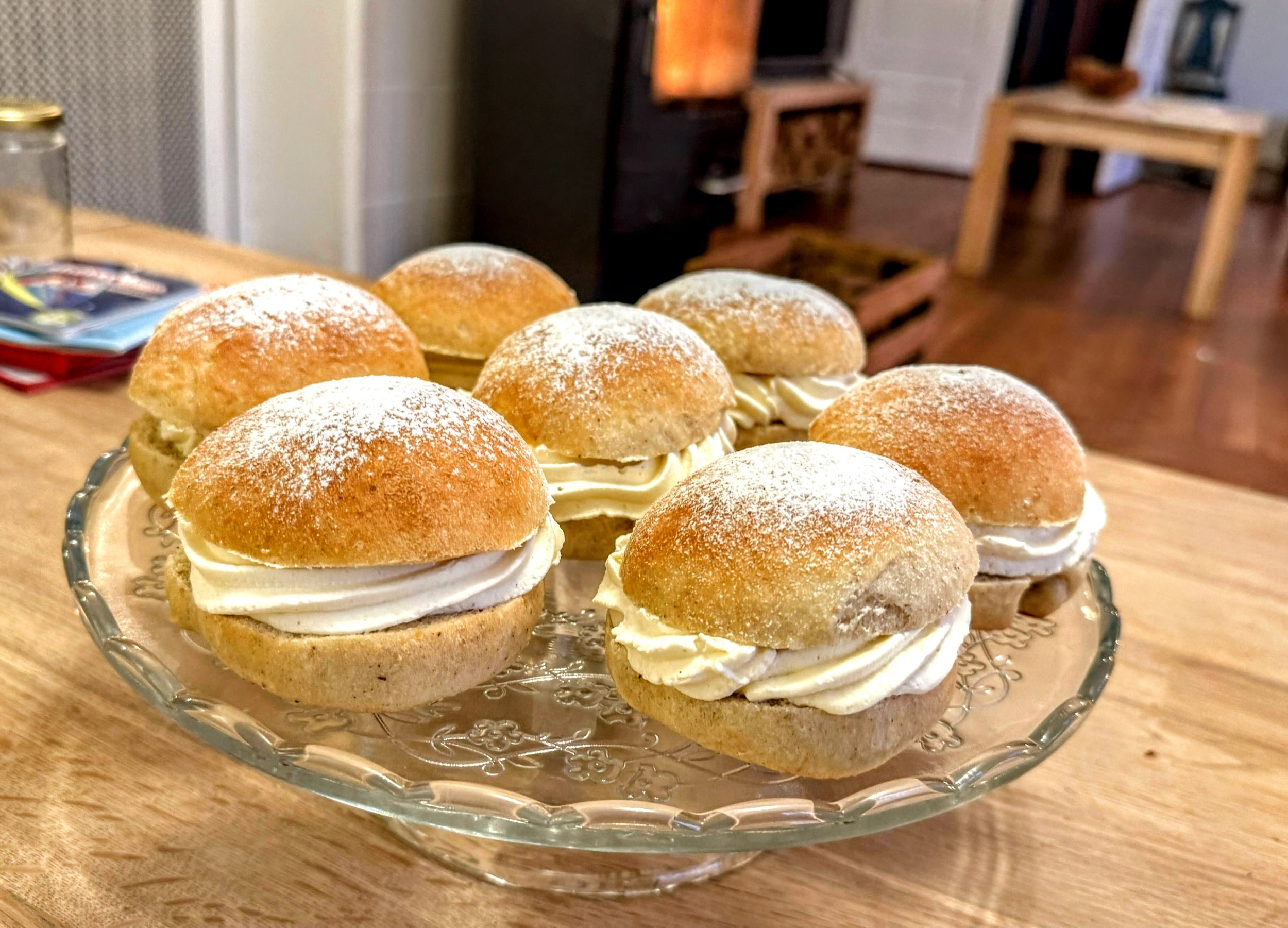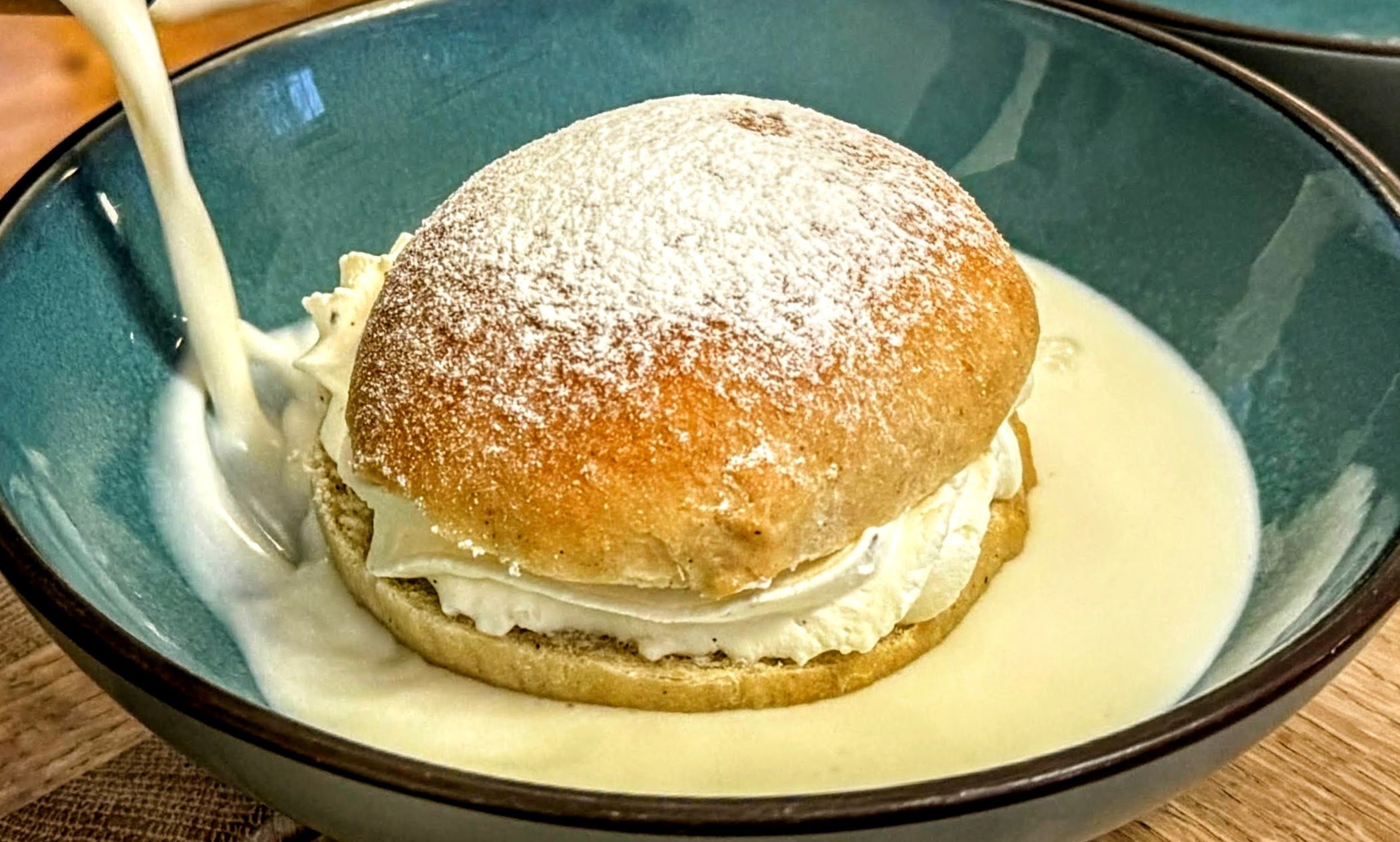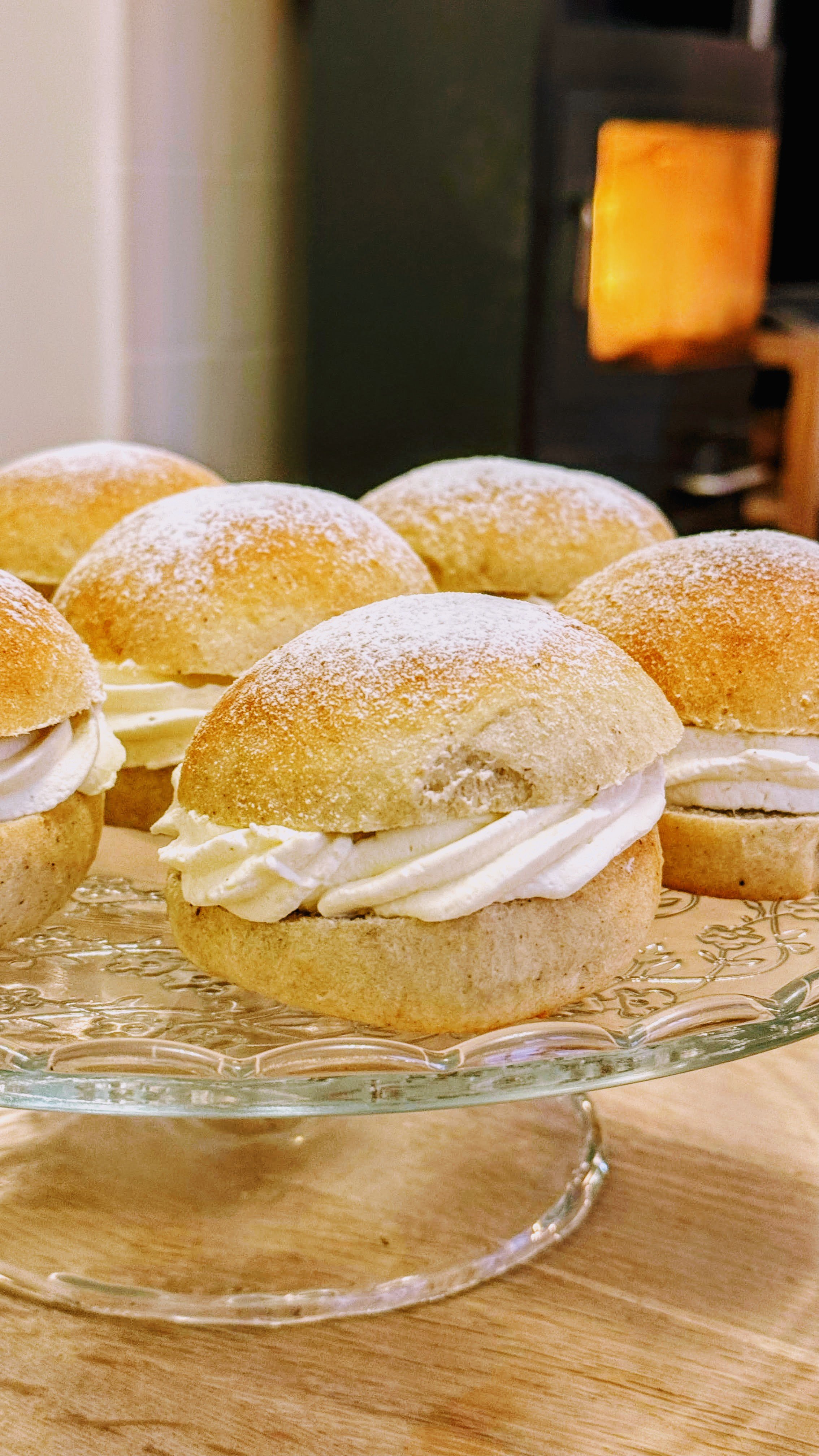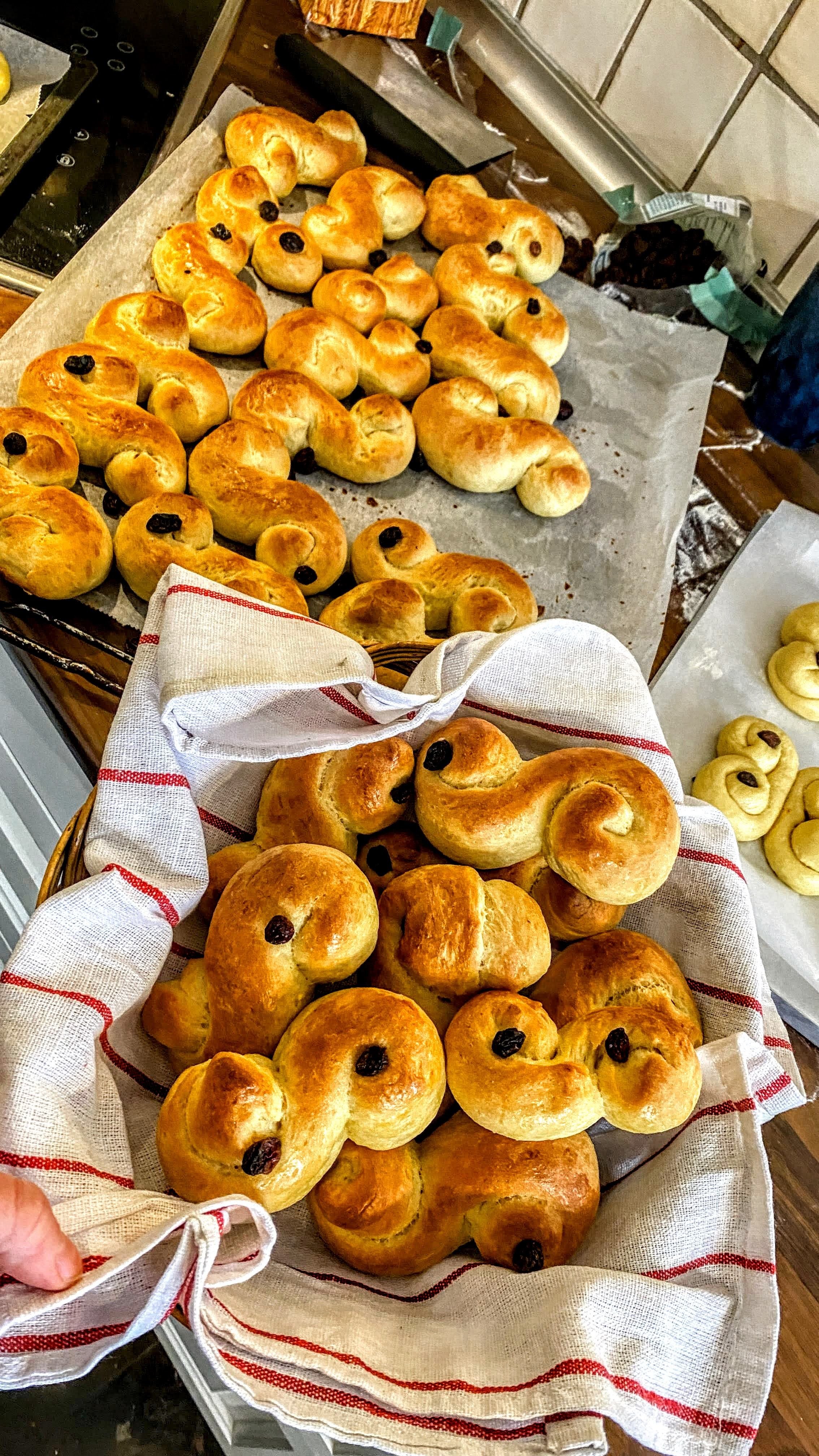Semlor from the Princess Cookbook
In the tapestry of Scandinavian culinary traditions, few treats are as eagerly anticipated as the semla – a delectable pastry that holds a special place in the hearts of Swedes. Known also as fettisdagsbulle, this indulgent sweet marks the celebration of Fettisdagen, the last day before the Lenten season. While variations exist across the Nordic countries, the Swedish semla, in its simplest form, is a testament to the art of pastry making, blending simplicity with rich, comforting flavors.
The journey of the semla from a plain bread roll eaten in a bowl of warm milk to its current form is a fascinating evolution of taste and tradition. Today, it is commonly crafted from a cardamom-spiced wheat bun, its top sliced off to make room for a generous filling of sweetened almond paste and a lavish crown of whipped cream, before being capped off with its own lid and dusted with powdered sugar.
Our journey into making this cherished treat draws directly from the esteemed "Princess Cookbook," a culinary treasure that has guided us in recreating this traditional Swedish pastry.
Jenny Åkerström's guide to preparing the semla dough "as usual" from the recipe 795, might seem cryptic at first glance. It harks back to a time when the art of baking with yeast and kneading bread was not common knowledge for everyone, including her royal pupils. We also followed her guide - recipe 920 - to crafting our own almond paste, diving into the nuanced world of bitter almonds—used sparingly due to their potential toxicity—and exploring the rich flavors they contribute. However, for those looking to simplify the process, opting for store-bought almond paste or marzipan, which safely incorporates bitter almonds or almond flavor extract, is a practical alternative. Enhancing the filling with extra chopped almonds can add a delightful crunch.
Without further ado, here follows the original recipe translated into english:
From the Princess Cookbook, recipe 803:
Semlor.
“(Makes 10.)
1/4 liter milk
25 grams yeast
Approximately 400 grams flour
2 egg yolks or 1 whole egg
1 deciliter sugar
20-30 sweet almonds
6 bitter almonds
10 cardamoms
2 teaspoons cinnamon
100 grams butter or vegetable margarine
For glazing: egg
Almond paste for filling: 100 grams sweet almonds, 3 bitter almonds
150 grams powdered sugar
Egg white or water
2 deciliters thick cream
Prepare the dough as usual (see No. 795) and let it rise. Then add the egg, sugar, the blanched and roughly chopped sweet almonds, the blanched and grated bitter almonds, the finely crushed cardamom and cinnamon, and the unskimmed butter. Work the dough vigorously until it pulls away from the bowl. During this time, add more flour. Once the dough has risen again, knead it back in the bowl until it is shiny and pliable, then transfer it to a floured surface and continue to work it. The dough should not be too stiff. Shape it into small round buns, place them on a baking sheet and let them rise very well. Watch the rising process carefully to ensure the buns do not rise so much that they crack on the surface, as this will flatten them. Very gently brush the semlor with egg. Bake them in a hot oven and let them cool without being exposed to drafts, as this will wrinkle the surface.
To ensure the semlor are light and fine, the dough must be well worked, but not too firm. The semlor should rise just the right amount on the baking sheet, and the oven must be carefully watched.
Prepare the almond paste in the usual way (see No. 920). Mix it with a little cream. Cut a lid off the semlor, add the almond paste, and top this with a dollop of whipped cream. Carefully replace the lid so that the cream is visible. Dust the semlor with vanilla or powdered sugar and arrange them on a napkin. Serve with warm or cold milk, sugar, and cinnamon.”


